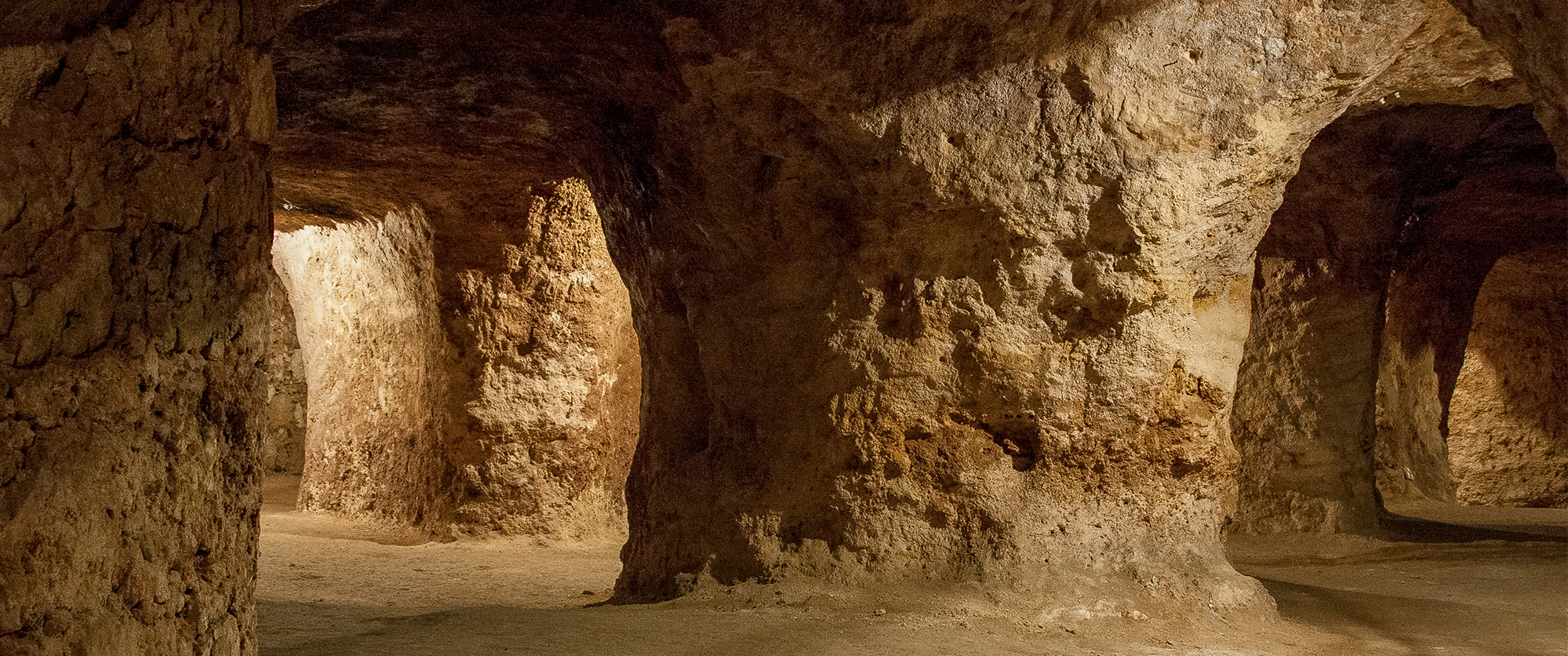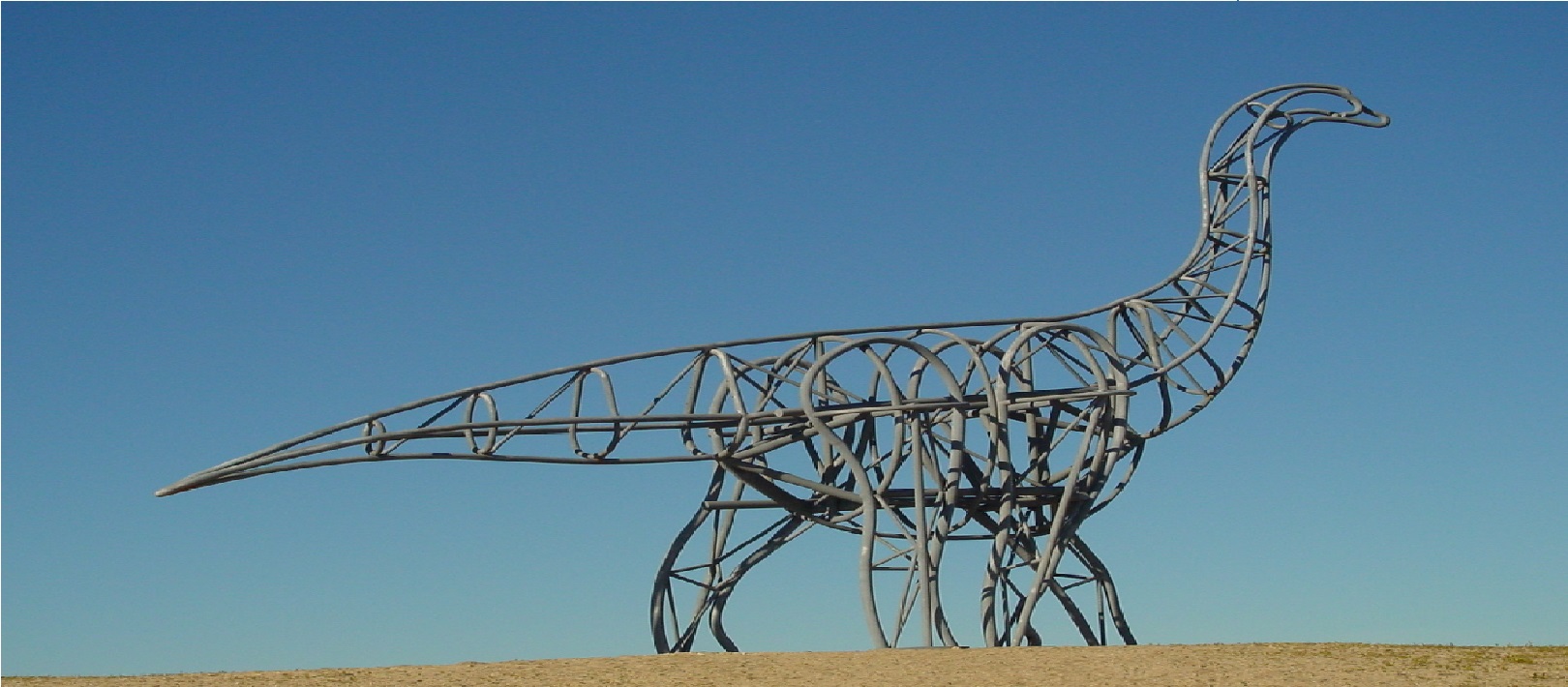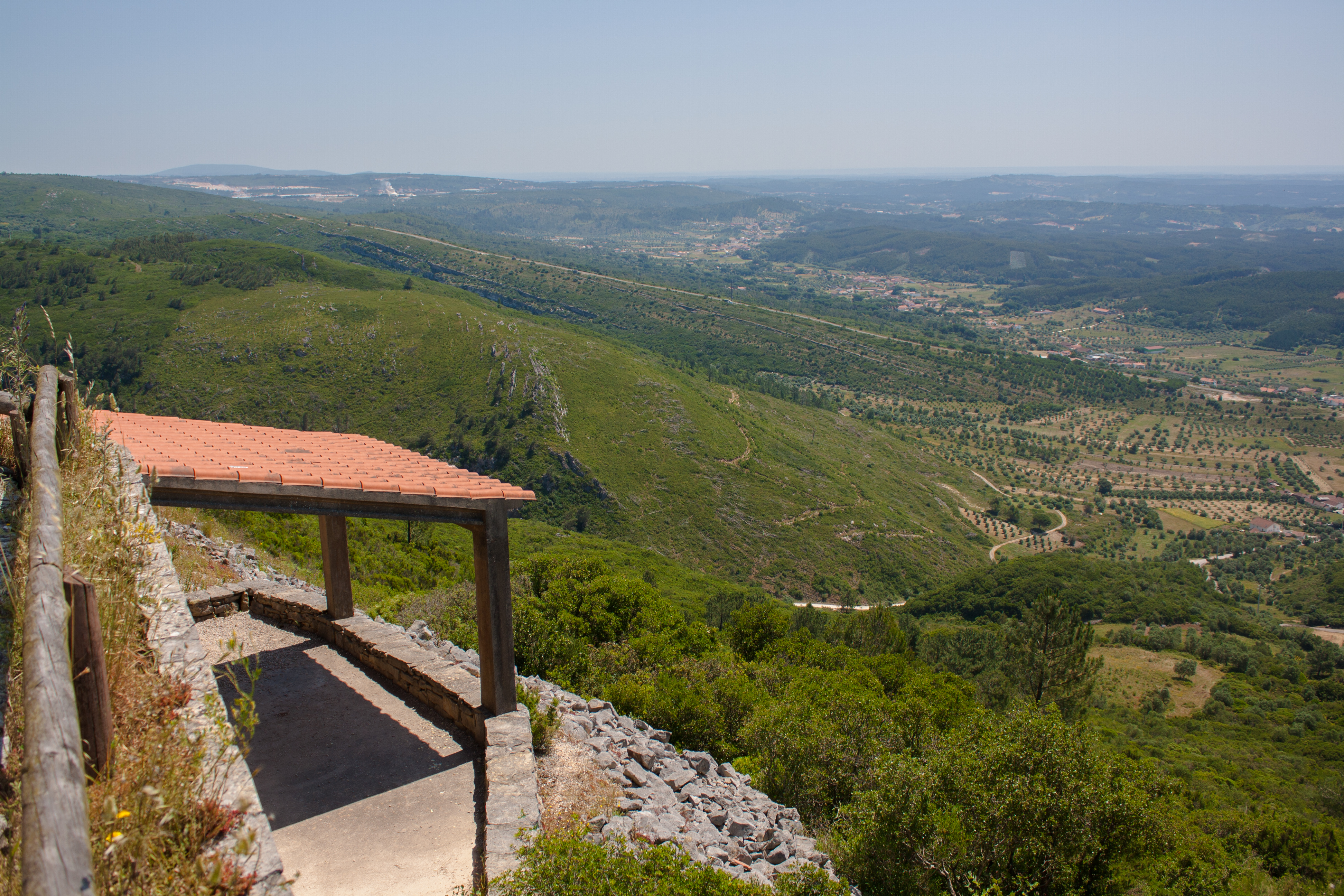The Caves of Coin Scientific and environmental interpretation Centre (CICA gm) is characterized by being an informative, didactic and scientific space. It is a place where students, tourists and public in general can find answers to the mul ...
The Olhos de Água of Alviela River Spring, Alcanena
The Alviela River Spring is located on the base of a cliff between the national limestone plate region and the lower Tagus tertiary basin. Here, a range of 150 million year old rocks are found together (Jurassic limestone and Tertiary sandstone). The Alviela River presents a permanent and steady flow all year long thanks to its unique water spring. Nonetheless, in periods of heavy rainfall, water is also expelled by temporary restitution points, the most important of all located near the main spring (Olhos de Água) and yet another by the Poço Escuro location. The river flow is strongly influenced by rain water that falls throughout the region’s water basin pertaining approximately 180km2 located in the Santo Antonio Plateau. After the water’s rapid infiltration in the earth, it is conducted by gravity along underground caves that lead to the spring. The Alviela River Spring is one of the country’s most important water spring, displaying water debits of 17L per second: about 1.5 million cubic meters per day. Since 1880 until very recently, this water spring was one of Lisbon’s most important water sources (The Alviela Aqueduct). Today it is still considered as the country’s most important underground water reservoir.
CHARACTERISTICS
City: Alcanena
Postal Code: 2380 - 037
Telephone: 249881805
Email: info@alviela.cienciaviva.pt
Website: http://www.alviela.cienciaviva.pt
tuesday, wednesday, thursday, friday
From 13:00:00 to -.
From 18:00:00 to -.
Weekend and Holidays Schedule:
From 10:00:00 to 13:00:00.
From 14:00:00 to 18:00:00.
Exceptions:
From may 1st to september 30th Tue-Fri 10:00am - 06:00pm Sat | Sun | Hol 11:00am - 07:00pm
Paid Entry:
0€
Discount Policy:
According to the different activities, the price may differ
Specific Conditions:
No prior booking required. The visit may done individually without guidance.
Method:
A pé
Difficulty Level:
Baixa
Group Visits:
Yes
Minimum Number of Person per group:
15
Maximum Number of Person per group:
240
Observations:
-
Guided Tours:
Yes
Observations:
The visit to the CARSOSCÓPIO - Alviela Ciência Viva Centre may include a guided visit to the water spring, since it is one of the visitation spots of the Walking Trail.
-
Activity Program:
-
Study and Research Unit:
The Alviela river spring is Portugal’s most important karsic water spring. The surrounding area of this spring is classified as Rede Natura 2000, included in the Serras de Aire e Candeeiros Point – PTCON0015. In December of 2005 this water spring was also introduced as a Ramsar Location, n.º 1616 – Mira-Minde Polje and associated water springs (Alviela, Almonda and Olho da Maria Paula) – being internationally recognized as important wetland heritage and a rich ecosystem for many different species.
Audiovisual and Multimedia Resources:
-
Volunteering Programs:
-
Hot and Cold Quaternary Field Trip; Olhos de Água do Alviela Walking Trail, Summer with Geology
Target Audience:
Schools, Public in General
Activity Cost:
0€
Weekly Schedule:
tuesday, wednesday, thursday, friday
From 10:00:00 to 13:00:00.
From 14:00:00 to 18:00:00.
Weekend and Holidays Schedule:
saturday, sunday, holidays
From 10:00:00 to 13:00:00.
From 14:00:00 to 18:00:00.
Exceptions:
From may 1st to september 30th Tue-Fri 10:00am - 06:00pm Sat | Sun | Hol 11:00am - 07:00pm
Observations:
Prices may differ according to activity
http://cm-alcanena.pt/index.php/pt/visitar-2/ondedormir
Where to Eat
http://cm-alcanena.pt/index.php/pt/visitar-2/ondecomer
Táxi
Agency Name:
Praça de Táxis Alcanena
Telephone Number:
249882494
Parking for private vehicles:
Yes
The Coin Caves (Grutas da Moeda) are located in São Mamede, municipality of Batalha. Its discovery happened in 1971, as two huntsmen that were chasing a fox, saw it enter by one natural hole under the bushes. Moved by curiosity, they decide ...
The salt-pans can be found 3 km away from Rio Maior, in a valley at the bottom of Candeeiros Mountain. Surrounded by trees, vineyards and other cultivated lands, they are considered a natural wonder, once the sea is about 30 km away. The en ...
Lapas Caves are a network of artificial galleries developed beneath the houses of the village with the same name. This urban area has been raised in a small elevation corresponding to a fluvial terrace of Almonda river, from the Quaternary, ...
The paleontological site of the dinosaurs in Pedreira do Galinha, discovered in 1994, is located in Serra d''Aire. This deposit is one of the most important in the world record, presenting hundreds of sauropod footprints.
Distance: 4.5 km; Duration: 3h; Difficulty: Difficult. Location: Aldeia de Chãos Starting point: Cooperative Parking Terra Chã gps-wgs84 coordinates: 39.417998, -8.920365 The natural park of the Aire and Candeeiros mountains are the most i ...
Circular route starting and ending in the Municipal Park. Mixed floor type, 6 km predominantly on a bike path and about 3 km on a dirt track, from the Health Center to the Marinhas do Sal village. Arriving at the Salt Flats of Rio Maior, y ...
From the geological point of view, the saltworks are located in a diapiric valley. A diapir is a low density rock mass, relatively mobile, crossing other denser rocks. This vertical movement from bottom to top, is made along faults and allo ...











